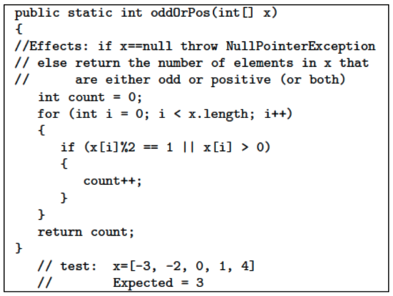Control Flow Graphs (CFG)
Control Flow Graphs (CFGs)
- A CFG models all executions of a method by describing control structures
- Nodes:
- Statements or sequences of statements (basic blocks)
- Edges:
- Transfers of control. an edge (s1, s2) indicates that s1 may be followed by s2 in an execution.
- Basic Block:
- A sequence of statements such that if the first statement is executed, all statements will be (no branches)
- Intermediate:
- Statements in a sequence of statements are not shown, as a simplification, as long as there is not more than one exiting edge and not more than one entering edge.
CFGs are sometimes annotated with extra information: branch predicates, defs, uses.
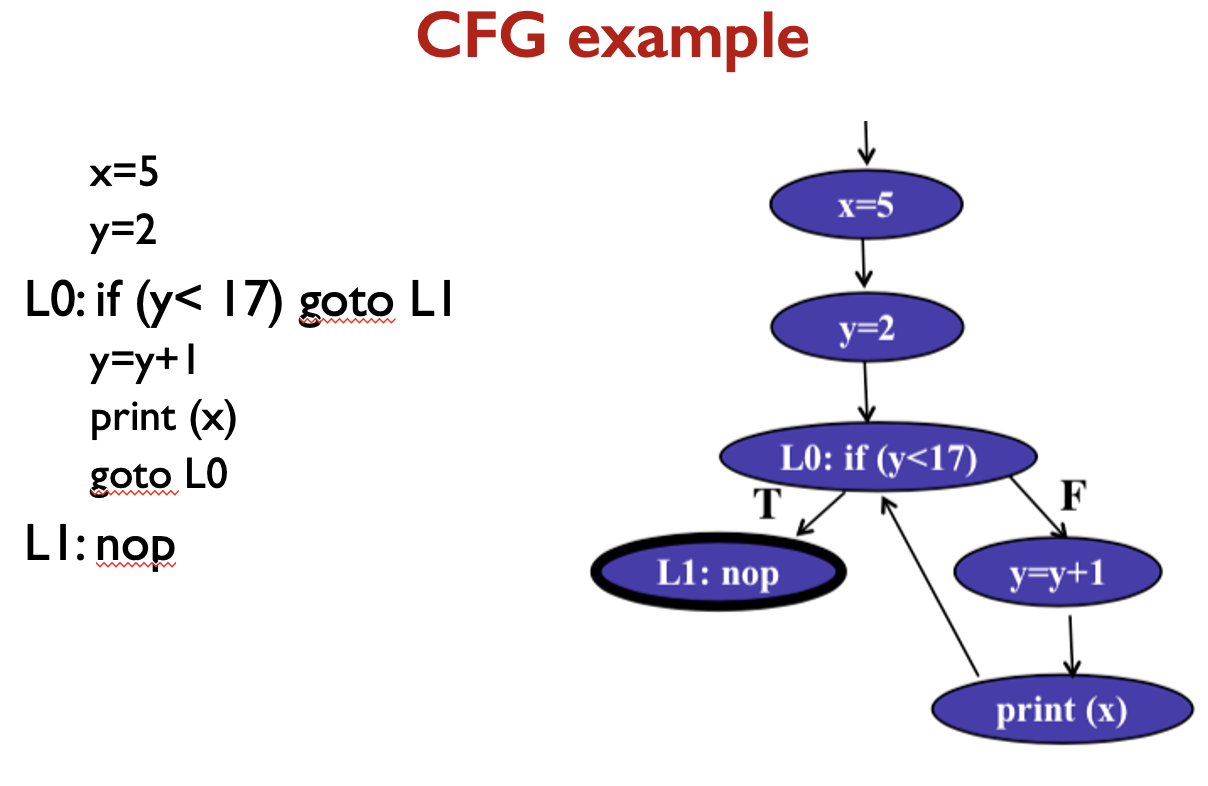
The if Statement
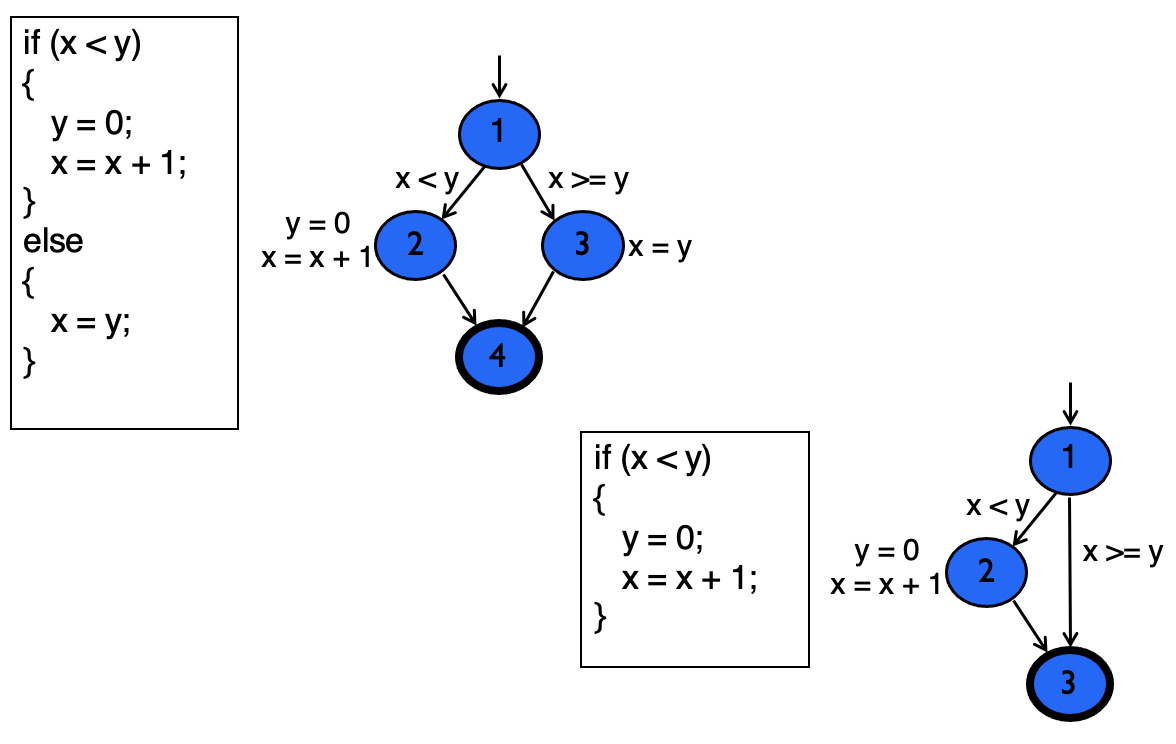
- From source code to control flow graph - issue about branching
- In a control flow graph, nodes corresponding to branching (if, while, …) should not contain any assignments
- This paramount for the identification of data flow information
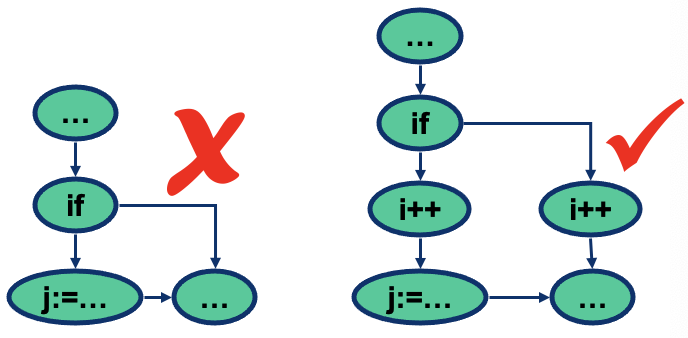
The if-Return Statement
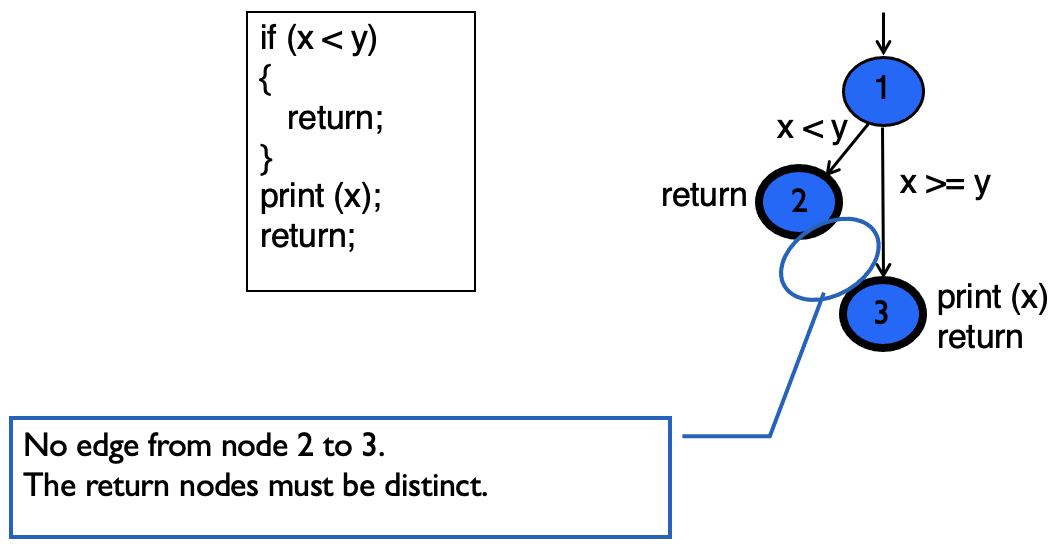
While and For Loops
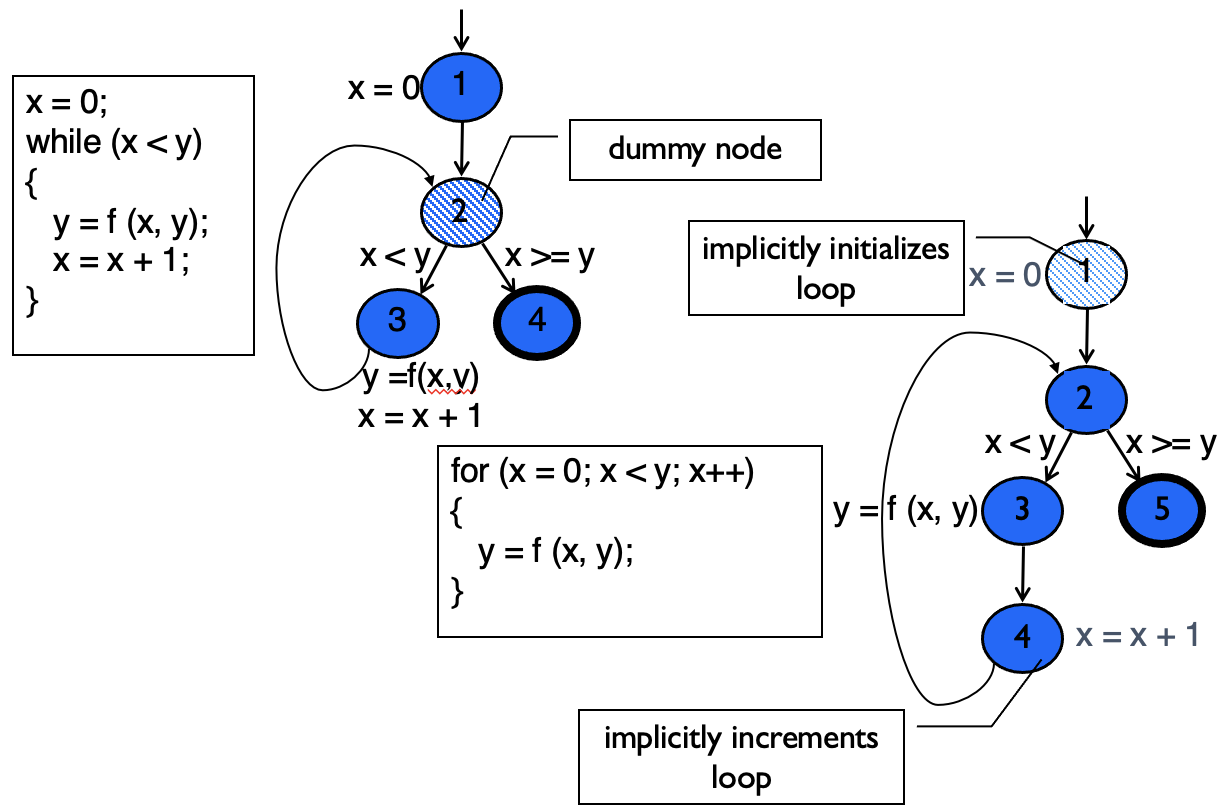
Do Loop, break and continue
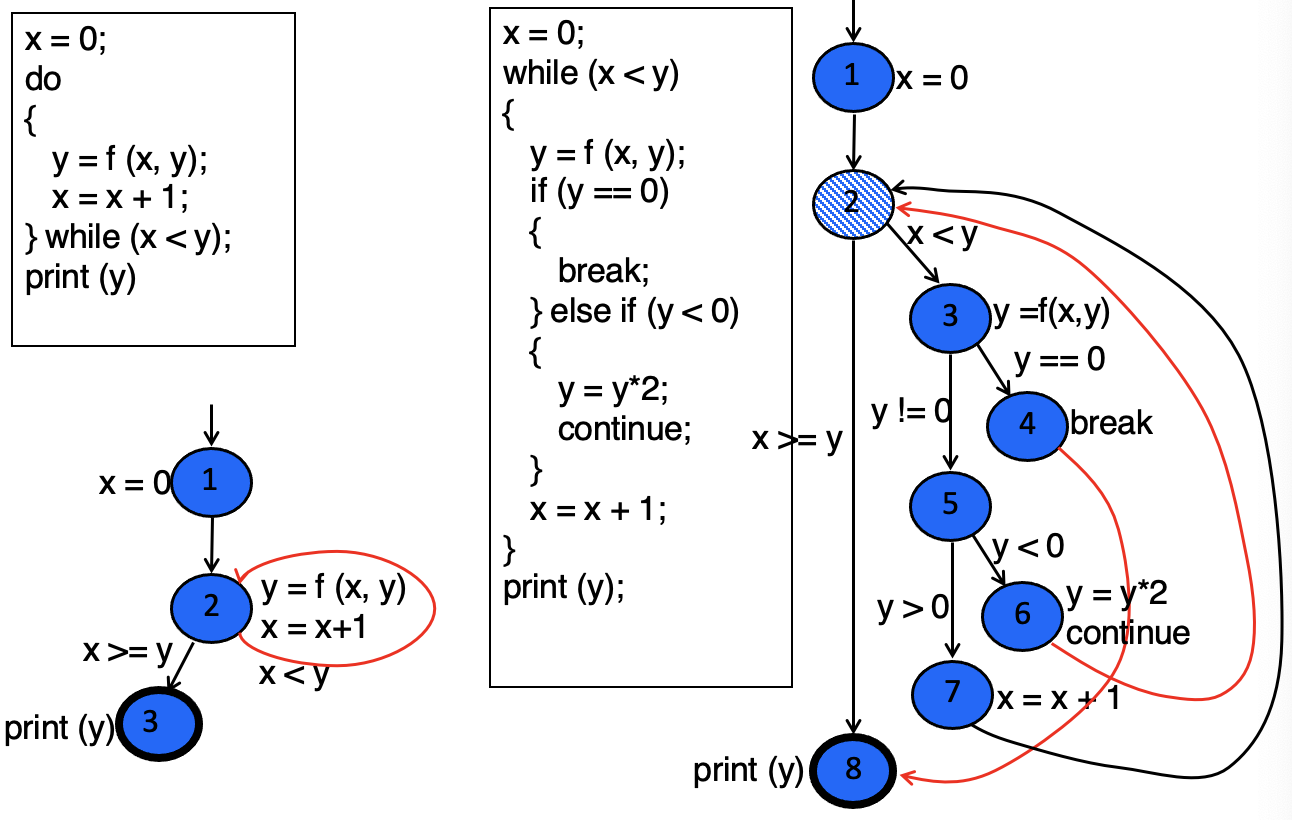
The case (switch) Structure
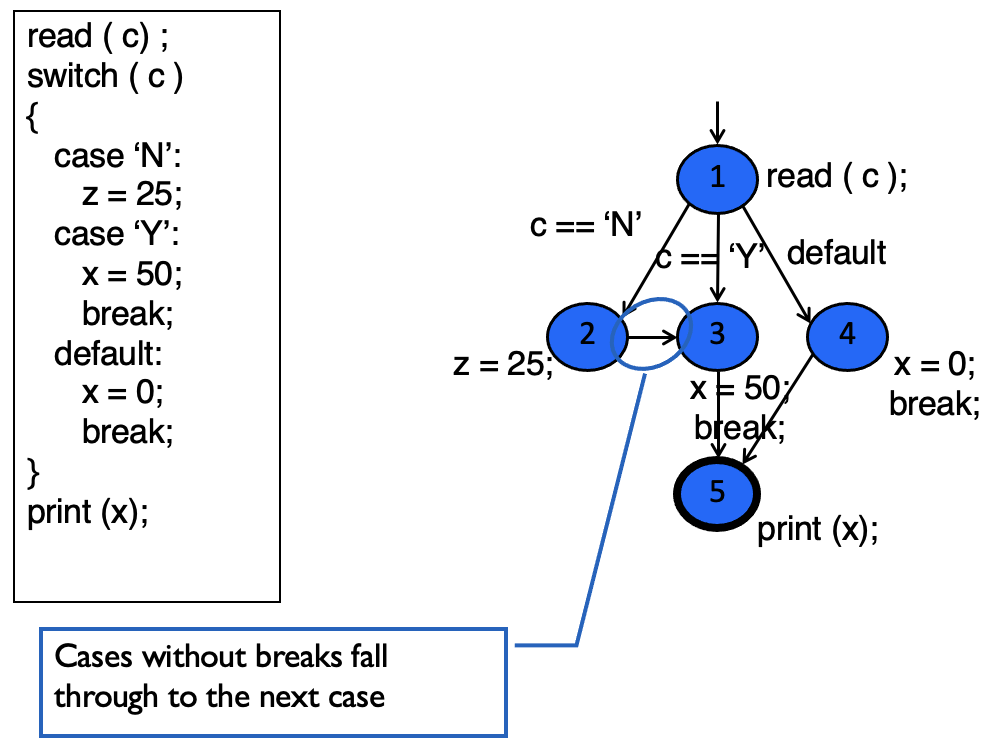
Exceptions (try-catch)
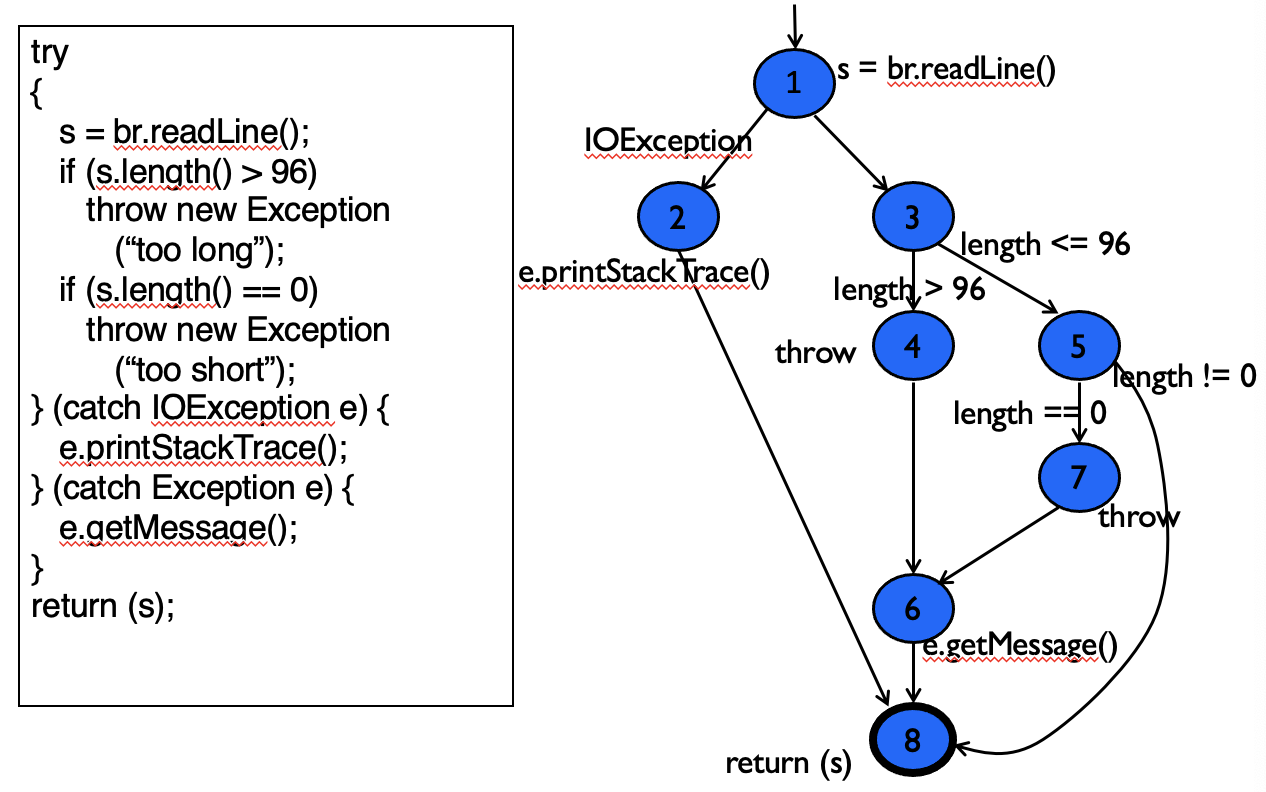
Example Control Flow - Stats
public static void computeStats (int [ ] numbers)
{
int length = numbers.length;
double med, var, sd, mean, sum, varsum;
sum = 0;
for (int i = 0; i < length; i++)
{
sum += numbers [ i ];
}
med = numbers [ length / 2];
mean = sum / (double) length;
varsum = 0;
for (int i = 0; i < length; i++)
{
varsum = varsum + ((numbers [ i ] - mean) * (numbers [ i ] - mean));
}
var = varsum / ( length - 1.0 );
sd = Math.sqrt ( var );
System.out.println ("length: " + length);
System.out.println ("mean: " + mean);
System.out.println ("median: " + med);
System.out.println ("variance: " + var);
System.out.println ("standard deviation: " + sd);
}We suggest stopping here and having the students draw the graph themselves. Then show the graph on the next slide to compare their answers.
CFG Exercise:
